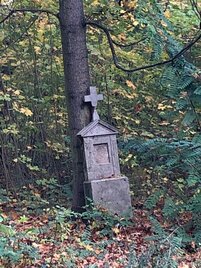 By M.P. Pellicer | Stranger Than Fiction Stories Bohnice is a district in northern Prague. It is home to a psychiatric hospital built at the beginning of the 20th century. The asylum was one of the largest in Europe. Small houses surround a large park with an Art Noveau church. However what attracts tourists and legend trippers is the cemetery that received the dead for fifty years. 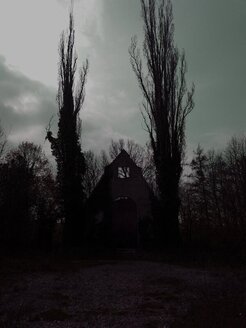 Cemetery of Fools in Bohnice, Prague c.2019 Cemetery of Fools in Bohnice, Prague c.2019 Warning: graphic crime photos below The six acre parcel of land is known as the Cemetery of Fools. Like many asylums built during these years, it had its own graveyard. Patients from the hospital were buried there from 1909 to 1951. Originally it was used for the patients' children, but eventually the inmates were buried there as well. Over 4,300 people were interred on these grounds. Some were patients and others were not. Suicides who were refused last rites and burials by the Catholic Church were taken to Bohnice Cemetery. They were wrapped only in linen, and dropped into the ground without a coffin. There were also unfortunate children born to parents who were hospitalized, as well as other tortured souls that suffered from schizophrenia, alcoholism, different addictions and people you would not want to meet like arsonists, pedophiles and murderers. These were exiled in death to a burial plot in the southwest corner of the cemetery. After decades of disuse the grounds became overgrown with only small hills, covered with ivy to signify where the tombs are located. Only a few have gravestones. There is a feeling of eternal winter no matter what season it is, however the worse feeling is felt in the area where the children are buried. Besides the patients there are also WWI soldiers, some from Serbia, Bosnia and Russia, nurses and locals. In 1916, an asylum in Pergine Valsugana, Italy was converted into a military hospital. Six hundred inmates mostly made up of soldiers, were taken to various hospitals in Austria-Hungary. One hundred were brought to Bohnice. That same year a typhus epidemic swept through the asylum that took over 640 patients, once of them an Italian soldier. Eventually 48 of the Italian patients were buried at Bohnice Cemetery. In 1932, Benito Mussolini placed a marble plaque in the cemetery chapel with their names. Other sources point to patients who were all sane, but inconvenient in some way to their family and were brought to Bohnice. Elderly heirs who lived too long, bastard children and others thought to be best forgotten, lived out their days in the asylum, and were laid to rest in the cemetery.  Tomb of Maria Tuma Reiter (1883-1912) Tomb of Maria Tuma Reiter (1883-1912) There is only one memorial with a legible name: Maria Tuma Reiter born in 1883, and passed in 1912 when she was 29 years old. Records indicate she died suddenly of pneumonia, but there is surety that she was a patient at the Bohnice Psychiatric Hospital, since she lived at the "bohnicke colony" which are cottages where the workers tended their own vegetable garden close to the clinic. She was married to Antonin and had two children. For many years her grave was tended, even though the rest of the cemetery was overgrown. It's believed her husband, and later her children looked after it, however by 1980 her children were dead and the grandchildren no longer lived in the area, nor maintained the memorial. Though most of those buried at Bohnice Cemetery are anonymous, there are some who are notorious. 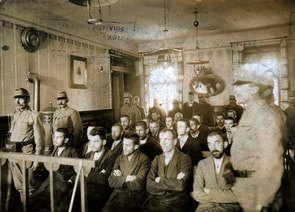 Princip, seated center of first row, during the trial. c.1914 Princip, seated center of first row, during the trial. c.1914 Gavrilo Pirncip the assassin of Archduke of Austria, Franz Ferdinand and his wife is buried here. His actions in 1914 precipitated World War One. He was 19 when he committed the assassination, and because of his age he was spared the death penalty, and sentenced to 20 years. However he died in April, 1918 from tuberculosis. He was the only prisoner in the Theresienstadt fortress (Small Fortress in Terezín), about 43 miles north of Prague. It was an old place established in 1784. Three days after he died, prison guards were the only witnesses to the secret funeral. A gravedigger disclosed this information in May, 1918. At the end of WWI, the body was exhumed and taken to Sarajevo. 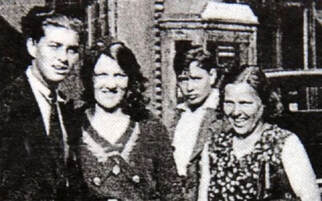 týlie Vranská (second from left), pictured at Wenceslas Square just one day before her murder (Source - Czech Police Museum) týlie Vranská (second from left), pictured at Wenceslas Square just one day before her murder (Source - Czech Police Museum) Sergeant Pavlíček, the alleged murderer of the prostitute Otília (Otýlie) Vranská, is said to be buried here. He never confessed to the crime, but confided to his friends he had done it. He ended up as a patient at Bohnice Psychiatric Hospital where he killed himself. It wasn't until 2023 that the murderer of Otylie was estabilshed. The murder of Otýlie Vranská (1911-1933), a street girl is one of the best known crimes in the history of Czech criminology. She was born in Slovakia and came from a poor background. It all started when two pieces of luggage were found at two different railway stations. They were sent from Prague from different stations. The autopsy found the parts belonged to one woman, who was killed by two blows to her head probably with a meat cleaver. Her head was cut off right after while she was unconscious, and a knife was used to stab the headless body seven times. She had eaten an apple a couple of hours before her death. 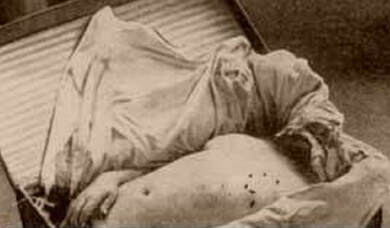 The contents of one of the luggage containing the remains of Otylie Vranska c.1933 The contents of one of the luggage containing the remains of Otylie Vranska c.1933 After the pictures of the luggage and the woman's head were published in every newspaper, two women identified her as their sister. The police learned her name, and that she was a streetwalker. She was last seen in front of a restaurant around midnight. During the investigation police received nearly 5,000, mostly anonymous letters that lead nowhere. The last letter pointing a finger at someone was received in 1966, 33 years after the crime, even though the case closed in the 1940s. It was thought that Vranska might have also been the victim of a serial killer, since there were seven women killed from 1926 to 1938. All of them were prostitutes except for two, and five of them came from Slovakia. Most were strangled and three were beheaded. Caustic acid was used to make identification difficult. All of the cases remained unsolved, and it's never been confirmed if they were the victims of one person. Perhaps the reason the murder remained unsolved for so long was errors found in the first autopsy. The medical examiner based the time of death to very early in the morning of September 1, 1933 based on undigested apple in her stomach. He also described where the body was dismembered by someone who had good knowledge of human anatomy. 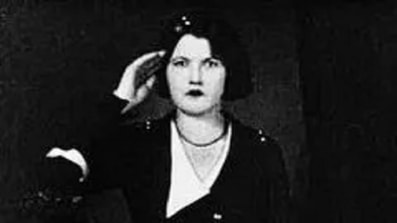 Police naturally looked at doctors or medical students as likely suspects, despite information provided by witnesses as to who the real culprit was. According to Marie Němečková, one of Vranska's sisters, she had been promised marriage and a job by sergeant-major Josef Pekny (Nice) of the Kasarna military barracks. They had met in the spring of that year. Another witness described that Vranska met Pekny and another prostitute named Koklesova, who was his current mistress on the night she died. Pekny was divorced, and denied he had promised the victim marriage when he was questioned by police. Could the threat of a scandal over a reneged marriage offer been the motive to kill Vranska? The Czech police didn't see the contradiction when Pekny and Koklesova provided alibis for each other. They also didn't search his apartment, despite the fact that Vranska's body had been washed post-mortem, which meant the perpetrator enjoyed some type of privacy in order to do this. Another misdirection in the case concerned letters sent to the editorial office of a Slovakian daily newspapers. They were stamped, "Phantom of the Street" and signed by Karel Widowary or Karel X.Y. He admitted killing Vranska by accident on Perlova Street. They had gone to his apartment, but once she brought up the subject of money, he realized she was a prostitute. He described where he was hurt by a prostitute in the past, which is when he drugged Vranska, stunned her and then cut up her body, using a picture of a human skeleton to guide him to quarter the corpse. Then he transported the suitcases to the different train stations. 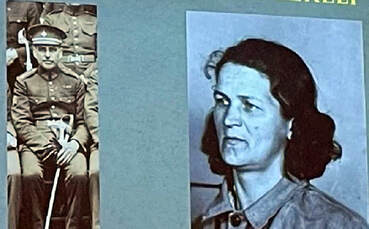 Josef Pekny and Antonie Koklesova, his mistress and possible accomplice in murder Josef Pekny and Antonie Koklesova, his mistress and possible accomplice in murder The only reason the police took notice of the letters, was that initial reports of the crime did not reflect that the victim was a prostitute. The Phantom also admitted he killed another prostitute named Janotova, and that he planned to continue murdering women since this gave him pleasure, and he "longed for blood". He described himself as a wealthy man who had traveled extensively. He said he spoke English, and worked for several years in the French foreign legion. In one of the letters he mentioned that he was tired of living and wanted to commit suicide. The authorities estimated he was about 40 years, with more than a basic education. He was so brazen that he actually dropped off letters directly at the newsroom, but the man was never caught. Despite the content of the letters police believed he was not the killer, because he mostly described details appearing in the newspapers.  Otylia Vranska, post autopsy c.1933 Otylia Vranska, post autopsy c.1933 In 2017, a hair sample of an unknown person found during the autopsy on the victim's hand and arm were used for DNA comparison, with samples from family of the original suspects. The results came back in 2020, but were kept private until 2023. It was announced that after studying documents from the original investigation it was concluded with 80% certainty that Sergeant Josef Pekny killed Otylia Vranska. Whether Antonia Koklesova was present during the crime is unknown, but it's believed she was an accomplice. Pekny was a professional soldier, and a relationship with a streetwalker would mean the end of his career in the military. It's believed that Vranska upon meeting Antonie Koklesova, realized the promise of marriage would never be kept and went to Pekny's home to confront him, or to blackmail him. Pekny's daughter refused to cooperate and provide a DNA sample, however it became a moot point when it was found the hair on the body belonged to a woman, which was neither Vranska or Koklesova's (compared to her grandson's DNA). The autopsy report reflected that Vranska had died from blood loss from the cut on her neck, which was made by someone standing behind or over her, after tilting her head forward very skillfully. This indicates a perpetrator with experience or training in this type of act. Afterward she was lain on the ground, where she was struck twice on the head, which could have been done with an ax or a military saber. The wound to her chest were shallow, and done after she was dead. Most telling was that the incisions to remove the head from the body caused vertebral injuries, which indicated this was not someone with professional knowledge of anatomy. Significant force was needed, indicating it was not done by a woman. Pekny was originally one of three suspects, however as a veteran the investigators were reluctant to question him thoroughly. The final theory is that Vranska could not return to her apartment because of her landlady's midnight curfew, and she went to Pekny's flat. An argument ensued, and a loud dispute at that time of night would have been noticed. Perhaps this is when he decided he had to get rid of her. Where Vranska was buried is unknown, not even a hint of where the grave was at has been discovered. Eventually the Vranska family died out. Pekny died at the age of 80, and had three children. Current law enforcement refuses to give out their whereabouts. The place where Vranska was killed no longer exists, and no pictures were taken.  Psychiatricka Nemocnice (psychiatric hospital) Bohnice, Prague Czeck Republic c.2016 Psychiatricka Nemocnice (psychiatric hospital) Bohnice, Prague Czeck Republic c.2016 When Bohnice Cemetery closed in the early 60s, most would not come near it even during the day. But what discouraged most, enticed others like satanists who started to used the abandoned chapel. Behind the derelict church was a morgue and an underground passageway, where dark rituals were performed, despite crackdowns by the police during the 1980s. In 1989 the chapel was burned down. Eventually the graveyard was used as a dump site. Then in 2013, Jiří Vítek –a local fireman, decided to reclaim and clean up the grounds. With the help of friends and volunteers they removed 40 tons of debris, including charred beams from the chapel. In 1996, Baroness Margaret Thatcher prime minister of UK (1979 to 1990) paid an unannounced visit to the cemetery. The reason given was that she came to exhume and return the remains of a British pilot shot down during WWII to his homeland. After two unsuccessful digs, since most of the graves were unnamed they resorted to speaking to a local petty thief, and vagrant known as Tattooed Pepík. His one-time drinking companion was the cemetery manager, which had told him who was buried and where. In exchange for a bottle of rum, he pointed them to the right spot, and after digging they found a coffin. Inside the remains had a ring or some other type of decoration that confirmed they had the right person. Rumors were this was not an unknown soldier but a family member of Sir Denis Thatcher, who had been taken prisoner of war during WWII. Whoever he was, the remains were taken back to England. 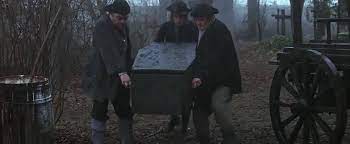 Czech-born film director Milos Forman used the cemetery's overcast appearance in the burial scene of his 1984 film Amadeus, where Mozart's body was dumped into a mass grave. The film was nominated for 53 awards and received 40, including 8 Academy Awards for Best Picture. Mozart himself had mysterious circumstances surrounding his burial. As depicted in the film, he was buried as a pauper in a mass grave at St. Marx Cemetery outside the old city walls of Vienna. His funeral took place on December 7, 1791 under stormy skies, which kept away many from attending his rites, including his wife. There is another version where he was given a "third class", funeral which would give him his own individual grave. In a time where records were poorly kept, and knowledge was only as good as a person's memory while they were alive, the gravedigger from 1791 died a few years later, and took the location of Mozart's burial place with him. A memorial was erected in 1855, in a place chosen more by conjecture than from actual fact. 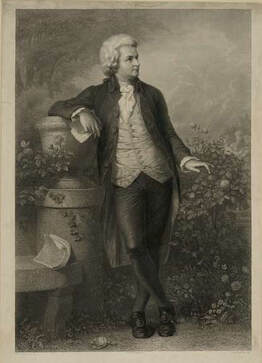 Wolfgang Amadeus Mozart (1756-1791) Wolfgang Amadeus Mozart (1756-1791) Another unanswered question pertaining to Mozart's death, was whether he was poisoned or not. Within a week after his death a Berlin newspaper claimed he met his end by foul means. He was a young man who only a few weeks before was in good health. He fell ill after a public performance in Vienna, and died two weeks later. The blame was laid at the feet of Antonio Salieri (1750-1825), who was known to be Mozart's bitter rival. A play was created titled Mozart and Salieri. Later it became an opera, revolving around the themes of envy and poisoning. In the film, Salieri tricks Mozart into composing the requiem music using his troubled past with his father. However the one who commissioned the requiem mass was Count Franz Walsegg-Stuppach for his young wife who had died. Later in life, Salieri suffered a nervous breakdown from the suspicions that he poisoned Mozart. He was admitted to the Vienna General Hospital where he accused himself of doing the deed, but then recanted. By then he was an old man with a terminal illness and deranged. This version of Mozart's death little by little became more of a fact, than just a suspicion. Mozart's symptoms have been examined, but without an autopsy, no definitive answer has been found as to what killed him, if it wasn't poison. The only illness that is posited as being responsible for his demise was epidemic streptococcal infection. Another question which is a subject of conjecture is whether Mozart composed the Requiem in D Minor on his deathbed. In the film he dictates the music to Salieri who takes down the composition without fully understanding the genius of the music. This is partly believed to be accurate when friends of Mozart, described where hours before his death he had the score of the Requiem brought to his bed. He sang the alto while the others sung the soprano line. It is said he dictated sections of the music to his pupil, Franz Süssmayr, the man Mozart's widow Constanze appointed to complete the score. There is dispute as to whether this is true, but some did remember Süssmayr receiving the dictation from Mozart, while Salieri watched. Considering all the mysteries that surrounded the last days of Mozart's life, it is most appropriate the movie setting for his burial was placed in such a bizarre and offbeat location as Bohnice Cemetery.
0 Comments
Your comment will be posted after it is approved.
Leave a Reply. |
Stranger Than Fiction StoriesM.P. PellicerAuthor, Narrator and Producer Archives
July 2024
Categories
All
|
Stories of the Supernatural
- Stories of the Supernatural
- Miami Ghost Chronicles
- M.P. Pellicer | Author
- Stranger Than Fiction Stories
- Eerie News
- Supernatural Storytime
-
Astrology Today
- Tarot
- Horoscope
- Zodiac
-
Haunted Places
- Animal Hauntings
- Belleview Biltmore Hotel
- Bobby Mackey's Honky Tonk
- Brookdale Lodge
- Chacachacare Island
- Coral Castle
- Drayton Hall Plantation
- Jonathan Dickinson State Park
- Kreischer Mansion
- Miami Biltmore Hotel
- Miami Forgotten Properties
- Myrtles Plantation
- Pinewood Cemetery
- Rolling Hills Asylum
- St. Ann's Retreat
- Stranahan Cromartie House
- The Devil Tree
- Trans-Allegheny Lunatic Asylum
- West Virginia Penitentiary
- Paranormal Podcasts
"When misguided public opinion honors what is despicable and despises what is honorable, punishes virtue and rewards vice, encourages what is harmful and discourages what is useful, applauds falsehood and smothers truth under indifference or insult, a nation turns its back on progress and can be restored only by the terrible lessons of catastrophe."
- Frederic Bastiat
- Frederic Bastiat

Copyright © 2009-2024 Eleventh Hour LLC. All Rights Reserved ®
DISCLAIMER
DISCLAIMER
 RSS Feed
RSS Feed
















